Find out more about our news >
Top Custom Embroidery Patch and Screen Printing T-Shirt Trends for 2025
The world of custom t-shirt decoration continues to evolve rapidly in 2025. Industry leaders see the trend toward personalization and sustainability drive the global custom t-shirt printing market to an estimated $10 billion by year’s end. New trend innovations in custom embroidery patch and screen printing t-shirt design reshape consumer expectations, fueled by a growing demand for eco-friendly and high-quality products. Nanchang Pinyang Clothing Co., Ltd. leads the way, helping businesses and individuals stay ahead of every trend shaping the t-shirt market.
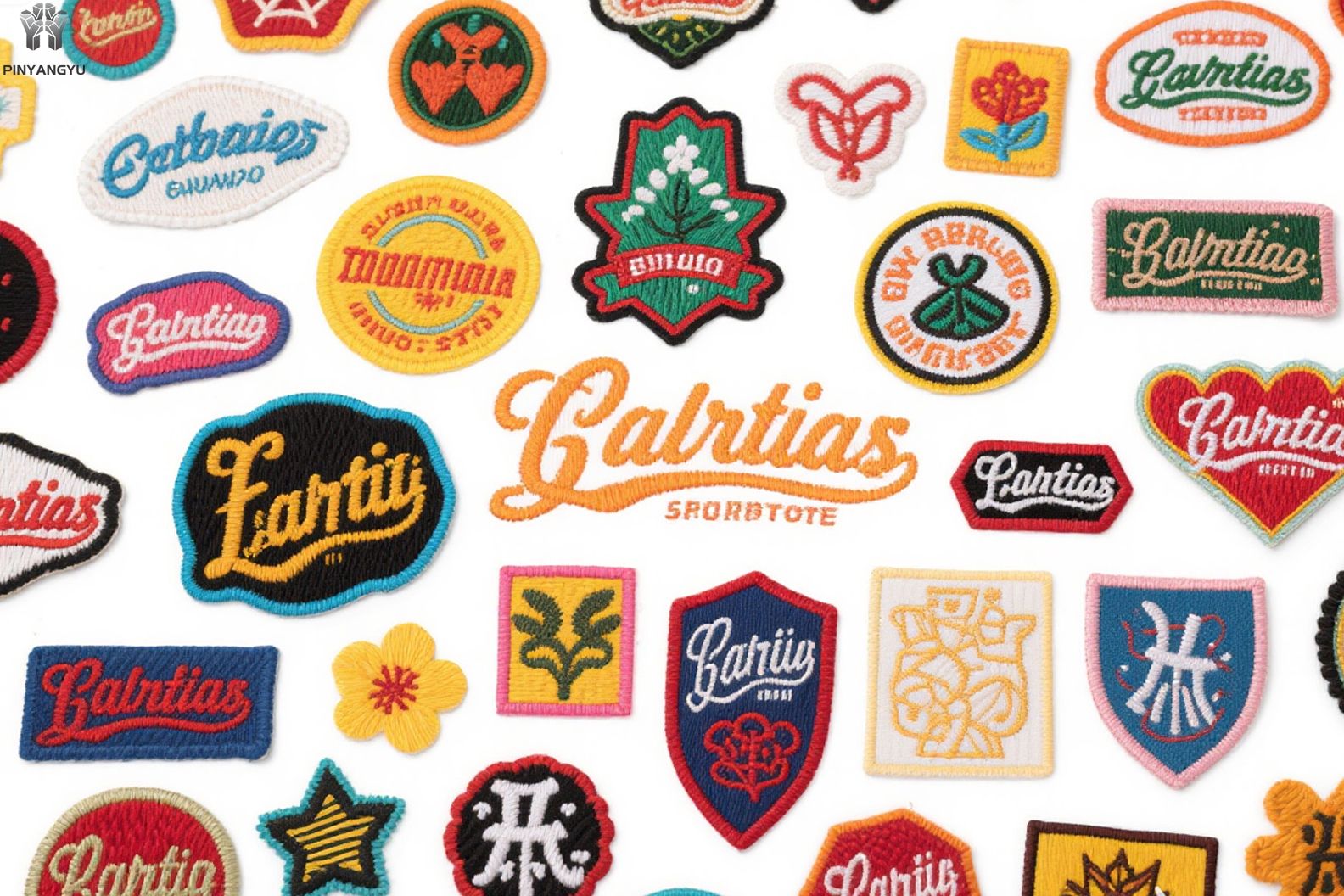
Key Takeaways
· The custom t-shirt market grows rapidly in 2025, driven by personalization, sustainability, and new design techniques.
· Special effects inks like puff, metallic, and glow-in-the-dark add unique textures and visual appeal to t-shirts.
· Color-changing prints and multicolor designs offer fresh, eye-catching options that attract younger consumers.
· Hybrid techniques combine embroidery and printing to create durable, stylish, and premium-looking apparel.
· Sustainable materials and eco-friendly production methods become essential for brands to meet consumer demand and reduce environmental impact.
Market Overview
Market Growth
The custom t-shirt market in 2025 shows remarkable expansion, with global revenues projected to reach $10 billion. The Asia Pacific region stands out as the fastest-growing area, driven by rising disposable incomes and a surge in internet access across countries like India, China, and Southeast Asia. A 20% market size increase in 2024 set the stage for this momentum. Localized e-commerce platforms and a youthful population eager for personalized fashion fuel this upward trend. Brands that adapt to these regional dynamics position themselves for significant growth.
Note: The Asia Pacific market offers unique opportunities for suppliers and designers who understand local preferences and digital buying habits.
Consumer Demands
Consumer preferences in 2025 reflect a shift toward durability, affordability, and self-expression. Surveys highlight that buyers value t-shirts made from synthetic blends such as polyester and elastane, which offer greater longevity than luxury fabrics. Well-designed 100% cotton options remain popular for their comfort and value. The trend toward all-over printed t-shirts continues, as consumers seek bold, personalized designs that showcase individual style.
· Comfort ranks as a top priority, with heavyweight cotton and relaxed fits appealing to a broad audience.
· Durability matters, as consumers want t-shirts that withstand frequent washing and wear.
· Appearance drives purchasing decisions, with minimalist graphics, bold typography, and vintage styles gaining traction.
· Eco-friendly materials, including organic cotton and recycled fabrics, align with the growing trend of ethical fashion.
· Oversized silhouettes and body-positive designs, inspired by streetwear and Gen Z culture, dominate summer collections.
Brands like AndCircus lead the way by blending organic cotton with elastane, creating t-shirts that are soft, flexible, and long-lasting. Their focus on inclusive sizing and sustainable practices resonates with modern consumers. Across the industry, textile innovation and attention to comfort, durability, and appearance define the leading trend in custom t-shirt design for 2025.
Custom Embroidery Patch and Screen Printing T-Shirt Trends
Special Effects Inks
Special effects inks define the most exciting trend in custom embroidery patch and screen printing t-shirt decoration for 2025. Designers and brands now use a wide range of specialty inks to create unique textures and visual impact. These inks transform basic t-shirts into standout pieces that capture attention and drive consumer interest.
· Puff print raises the ink off the fabric, creating a soft, three-dimensional effect. This technique works well for athletic numbers and bold typography.
· Metallic print uses real metallic particles, delivering a smooth, reflective finish in gold, silver, or copper. This effect adds a sense of luxury to custom logo embroidery and graphic designs.
· Suede print provides a velvet-like texture, offering a premium tactile experience for high-end fashion or custom embroidery.
· Flock print applies fibers to glue, resulting in a textured, plush surface.
· Foil print uses metallic foil paper to create shiny, eye-catching graphics.
· Caviar bead print adds small plastic beads for tactile interest and visual depth.
· Glow-in-the-dark and reflective prints enhance visibility and novelty, especially for streetwear and safety apparel.
· Silicone print offers durability and a soft hand feel, making it ideal for activewear.
Nanchang Pinyang Clothing Co., Ltd. leads the industry by mastering these special effects. Their expertise ensures that each custom embroidery patch and screen printing t-shirt meets the highest standards for both appearance and durability. Brands must consider garment material, color, and design complexity when selecting special effects inks. While these techniques increase production costs, they significantly boost the perceived value and trend appeal of the final product.
Tip: Always prepare high-resolution graphics (at least 300 DPI) and use CMYK color mode to achieve the best results with special effects inks.
Color-Changing Prints
Color-changing prints represent a cutting-edge trend in the custom embroidery patch and screen printing t-shirt market. These prints use thermochromic or photochromic inks that react to heat or sunlight, shifting colors when exposed to different conditions. This interactive feature appeals to younger consumers and those seeking novelty in their wardrobe.
Brands use color-changing inks to highlight typography, custom logo embroidery, or graphic elements that reveal hidden messages or patterns. The technical process requires careful control of ink density and precise application, especially on dark fabrics. Proper curing and fabric compatibility ensure the longevity of the color-changing effect.
Nanchang Pinyang Clothing Co., Ltd. has pioneered the use of color-changing inks in large-scale production, setting a new standard for innovation in the industry. Their approach combines trend-driven design with reliable manufacturing, making color-changing prints accessible for both small brands and major retailers.
Multicolor Designs
Multicolor designs dominate the trend landscape for custom embroidery patch and screen printing t-shirt production in 2025. Consumers demand vibrant, detailed graphics and bold typography that reflect their personal style. The latest technology enables brands to deliver these complex designs efficiently and cost-effectively.
Method | Best For | Fabric Compatibility | Cost & Setup | Color & Durability |
DTF (Direct to Film) | Small to medium runs, versatile | Works on cotton, polyester, blends, dark fabrics | Low setup cost, no pretreatment needed | Vibrant colors, durable prints lasting 50+ washes |
DTG (Direct to Garment) | High-detail artwork on cotton | Primarily 100% cotton | Medium setup cost, requires pretreatment | Excellent color detail, medium durability |
Screen Printing | Large bulk orders | Most fabrics (with ink changes) | High setup cost, cost-effective for 100+ units | Very durable, but limited color blending |
Sublimation | All-over prints on polyester | 100% light polyester only | Medium setup cost | Super vibrant, photo-quality, medium durability |
DTF printing stands out as the leading trend due to its flexibility across fabric types and its ability to produce vibrant, long-lasting colors. This method supports on-demand production and aligns with the market’s shift toward sustainability and nearshoring.
However, multicolor designs can increase production costs. Each additional color requires a separate screen and printing pass, raising setup fees and labor. High-density or complex graphics may increase costs by 25–50%. Bulk orders help offset these expenses, making multicolor designs more affordable for larger runs.
Note: Brands should balance design complexity with production budgets to maximize both visual impact and profitability.
Hybrid Techniques
Hybrid techniques mark a significant trend in custom embroidery patch and screen printing t-shirt decoration. By combining embroidery with screen printing or DTF, brands achieve unique finishes that set their products apart. These methods blend the durability and elegance of custom embroidery with the vivid color and fine detail of modern printing.
· Hybrid designs often feature embroidered outlines or logos paired with printed backgrounds or typography.
· Metallic and glitter effects become possible by layering specialty inks with embroidery, enhancing the premium look of the t-shirt.
· Printed embroidery and embroidered print techniques create raised textures and intricate graphics, appealing to consumers who value both style and craftsmanship.
Nanchang Pinyang Clothing Co., Ltd. stands at the forefront of this trend, offering advanced hybrid solutions that meet the demands of fashion-forward brands. Their expertise in both custom embroidery and screen printing ensures seamless integration of techniques, resulting in t-shirts that capture the latest trends and deliver superior quality.
Brands that embrace hybrid techniques can offer customers truly unique apparel, combining the best of both worlds in custom logo embroidery and graphic design.
T-Shirt Design Trends 2025
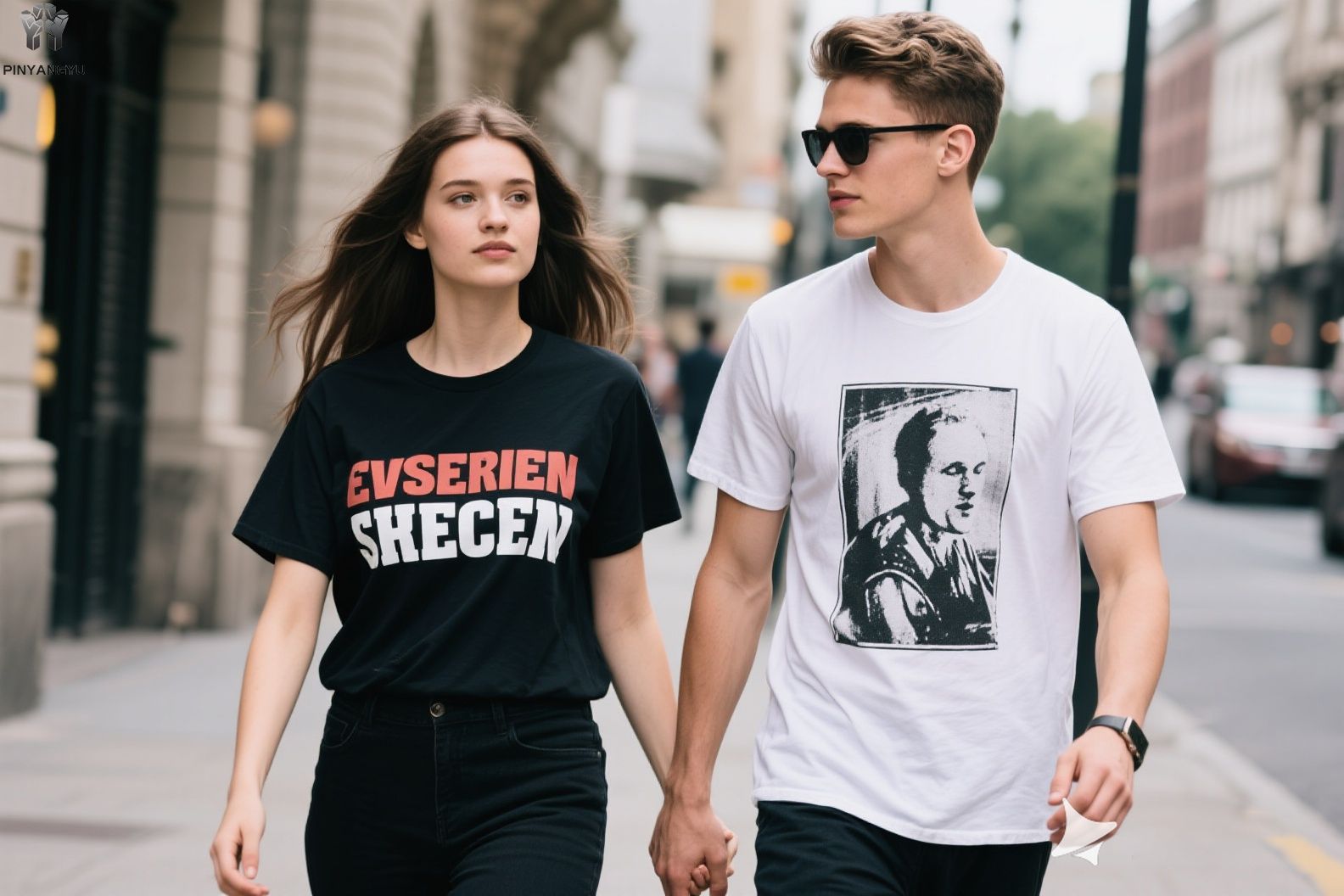
Streetwear Influence
Streetwear continues to shape t-shirt design trends in 2025. Designers blend function and fashion, creating climate-aware and seasonally layered looks. Oversized linen shirts, drawstring shorts, and sleeveless bomber vests dominate warmer months, while hybrid hoodies and tonal puffer vests appear in colder seasons. This trend emphasizes practical, adaptable wardrobes. Urban motifs, oversized fits, and bold graphics attract Gen Z and millennials. Custom embroidery remains popular for its durability and tactile appeal, supporting unique fashion statements. The global embroidery market grows as consumers seek personalized streetwear. Heavyweight tees, enzyme-washed denim jackets, and embroidered hats lead product categories. Sustainability drives material choices, with organic cotton and recycled fabrics becoming standard.
Personalization
Personalization stands at the core of modern t-shirt design trends. Brands offer flexible shipping and delivery options, reducing cart abandonment and boosting satisfaction. Customers value the ability to customize their t-shirts using 3D product configurators, which allow real-time visualization and control over appearance. This interactive experience builds trust and confidence, reducing order errors. Positive experiences with personalized products and delivery options increase loyalty and repeat purchases. Brands that prioritize personalization see higher customer retention and stronger word-of-mouth recommendations.
Clean Stitching
Clean stitching defines quality in t-shirt design trends for 2025. Consumers expect precise seams and flawless finishes, especially in custom embroidery and hybrid designs. Brands invest in advanced machinery to achieve consistent, neat stitching that enhances both comfort and durability. Clean stitching supports the trend toward minimalist graphics and bold and decorative typography, ensuring every detail stands out. This focus on craftsmanship appeals to buyers who value both aesthetics and longevity in their t-shirts.
Bold Graphics
Bold graphics and expressive typography dominate t-shirt design trends this year. Designers use vibrant colors, large-scale prints, and bold and decorative typography to create visual impact. Urban themes, vintage logos, and sports-inspired motifs remain popular. AI-enhanced tools enable rapid adaptation of logos and typography, supporting fast-moving trends. Breathable fabrics such as cotton and linen gain popularity, especially in summer collections. Market analysis shows a surge in demand for lightweight, comfortable t-shirts with sweat-absorbing properties. Brands launch summer-inspired collections early, emphasizing comfort, versatility, and seasonal aesthetics.
Tip: Combine bold and decorative typography with clean stitching and breathable fabrics to create standout t-shirts that meet both style and comfort demands.
Sustainability and Technology
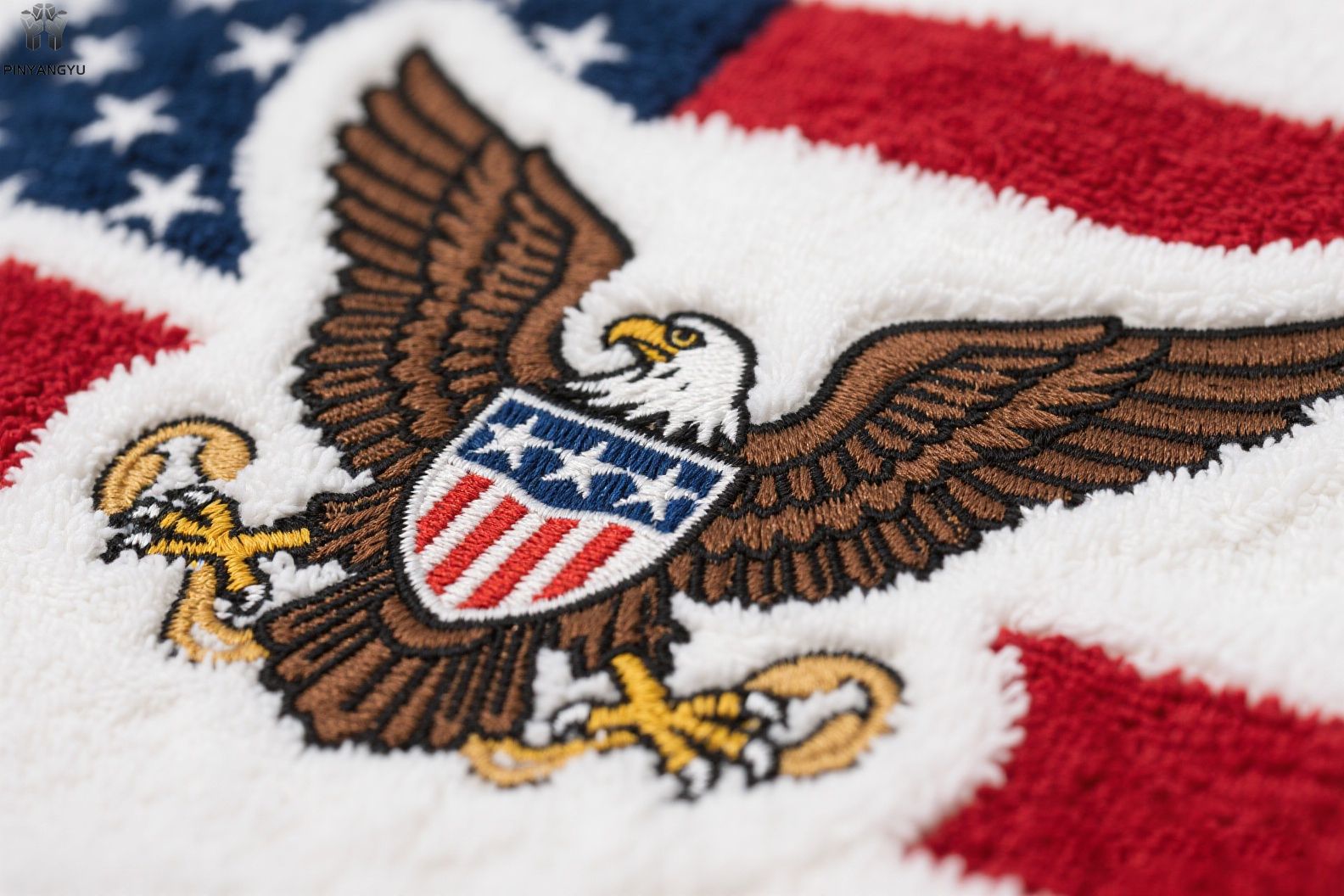
Eco-Friendly Methods
Sustainability shapes every major trend in the custom t-shirt industry for 2025. Leading manufacturers now adopt eco-conscious screen reclamation techniques to reduce chemical waste and minimize environmental impact. Many companies use automated screen reclamation systems. These systems lower labor costs, decrease chemical use, and improve filtration. Manual reclamation remains common, but brands optimize it with washout booths, dip tanks, and advanced filtration. This approach ensures less waste and extends screen life. Maniak Prints demonstrates commitment to sustainability by using organic cotton and water-based inks for their t-shirt production. These practices support both environmental responsibility and compliance with regulations.
· Eco-conscious screen reclamation reduces chemical waste.
· Automated systems lower labor and improve filtration.
· Manual methods use washout booths and dip tanks for better results.
· Organic cotton and water-based inks minimize environmental impact.
Sustainable printing and embroidery methods now set the standard for responsible t-shirt production.
Recycled Materials
Recycled materials have become a core element in the latest trend for custom apparel. Brands increasingly source fabrics made from recycled polyester, plastic bottles, and post-consumer waste. These materials offer durability and comfort while reducing landfill waste. Many manufacturers blend recycled fibers with organic cotton to create soft, long-lasting t-shirts. This approach appeals to eco-conscious consumers and supports a circular economy. Companies that prioritize recycled materials often see stronger brand loyalty and positive market response.
Design Software
Beginner-friendly design software now transforms the custom t-shirt creation process. Tools like Pacdora provide intuitive 3D mockup features, allowing users to create professional merchandise scenes without prior design experience. Users can adjust positions, angles, and textures, then export high-resolution images instantly. Canva offers a user-friendly interface with quick actions and AI-powered tools. Features such as Magic Eraser and Magic Animate simplify design tasks, making graphic creation accessible to everyone. These platforms accelerate the design process and enable more people to participate in the custom t-shirt trend.
Easy-to-use design software empowers both beginners and professionals to bring creative t-shirt ideas to life quickly.
Actionable Strategies
High-Demand Categories
Successful brands in 2025 focus on high-demand categories to maximize profit and market share. All-over printed t-shirts attract buyers who seek bold patterns and fun graphics for casual wear. Tank tops remain popular for their versatility in warm weather and appeal to both casual and active lifestyles. Pajamas, including sets and nightshirts with playful designs, offer another profitable avenue, combining comfort with style. Companies use value-based pricing for personalized or unique apparel, which commands higher prices due to its special meaning. High-volume sales with lower prices work well for everyday t-shirt items, leveraging quantity for increased profit. Differentiation through unique designs, customization, and strong brand identity helps avoid price wars and maintain healthy margins. Brands also monitor hidden costs, such as advertising, shipping, and platform fees, to protect profitability. Flexible pricing models, including seasonal adjustments and targeted discounts, further optimize revenue.
Print-on-Demand
The print-on-demand model transforms how businesses manage inventory and scale operations. Companies produce each t-shirt only after receiving an order, eliminating the risk of overstocking or outdated inventory. This approach reduces warehousing and inventory management costs, improving cash flow. Print-on-demand enables brands to expand product variety and increase production without large upfront investments. Businesses can quickly respond to market trends and test new designs with minimal financial risk. This flexibility supports rapid growth when a product succeeds, making print-on-demand a preferred strategy for modern custom embroidery patch and screen printing t-shirt brands.
Supplier Partnerships
Forming strong supplier partnerships is essential for delivering quality and meeting customer expectations. Brands should evaluate a supplier’s product catalog and quality, ensuring access to premium fabrics and eco-friendly options. Printing technology and methods must align with design needs, whether for custom embroidery or advanced screen printing effects. Custom branding options, such as labels and packaging, help maintain a consistent brand image. Reliable fulfillment speed and a robust shipping network ensure timely delivery. Cost-effectiveness, healthy profit margins, and seamless integration with online platforms like Shopify or Etsy are also critical. Ordering samples before committing to a supplier verifies garment quality and print accuracy. Specialized partners, such as Nanchang Pinyang Clothing Co., Ltd., offer expertise in both sustainability and advanced techniques, supporting brands that prioritize innovation and environmental responsibility.
Brands that adopt eco-friendly materials, advanced printing methods like DTF, and sustainable practices align with consumer demand and strengthen their market position.
The custom embroidery patch and screen printing t-shirt market in 2025 highlights innovation, sustainability, and personalization. Brands that embrace new techniques and materials meet evolving consumer demands. They gain a competitive edge by exploring advanced technology and eco-friendly options. Strong supplier relationships help deliver high-quality t-shirt products. Staying proactive ensures continued success in the dynamic custom apparel industry.
FAQ
What are the top fabric choices for custom t-shirts in 2025?
Polyester blends and 100% cotton remain the most popular. Brands prefer these fabrics for their comfort, durability, and print quality. Recycled materials and organic cotton also gain traction as sustainability becomes a key trend.
How do special effects inks enhance t-shirt designs?
Special effects inks, such as puff, metallic, and suede, add texture and visual interest. These inks create unique finishes that help brands stand out. Designers use them to elevate logos, graphics, and custom embroidery patches.
Why do brands combine embroidery with screen printing?
Hybrid techniques blend the durability of embroidery with the vivid detail of screen printing. This approach produces unique textures and layered designs. Brands use hybrid methods to offer premium, eye-catching apparel.
What makes print-on-demand a preferred business model?
Print-on-demand reduces inventory risk and lowers upfront costs. Brands can quickly test new designs and respond to trends. This model supports flexible production and helps businesses scale efficiently.
How do sustainable practices impact custom t-shirt production?
Sustainable practices, such as using recycled fabrics and water-based inks, reduce environmental impact. Brands that adopt eco-friendly methods appeal to conscious consumers. These practices also support long-term industry growth.
Customized discourse power, defined by you
From demand to ready to wear, Pinyang Clothing customizes messages to build a bridge for you


 en
en

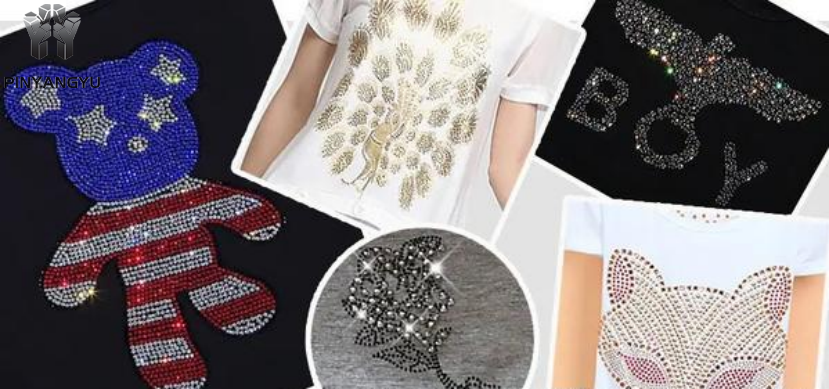
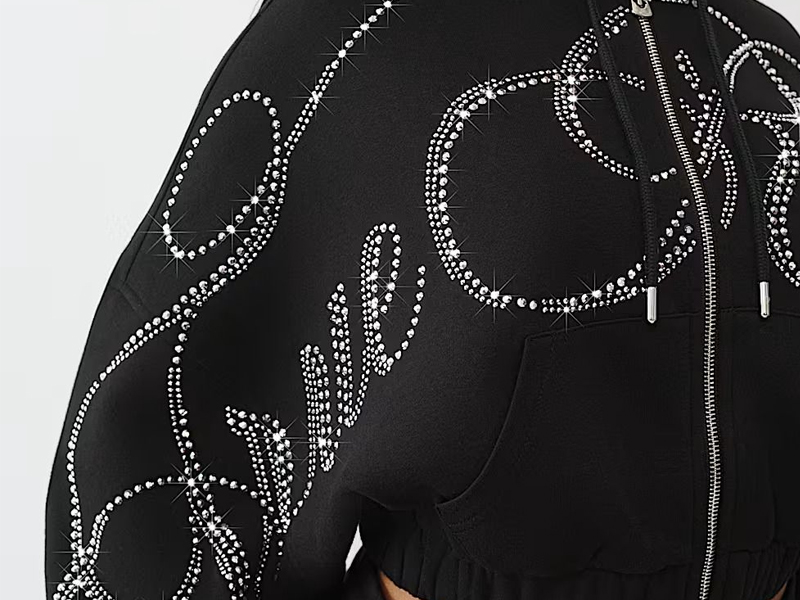
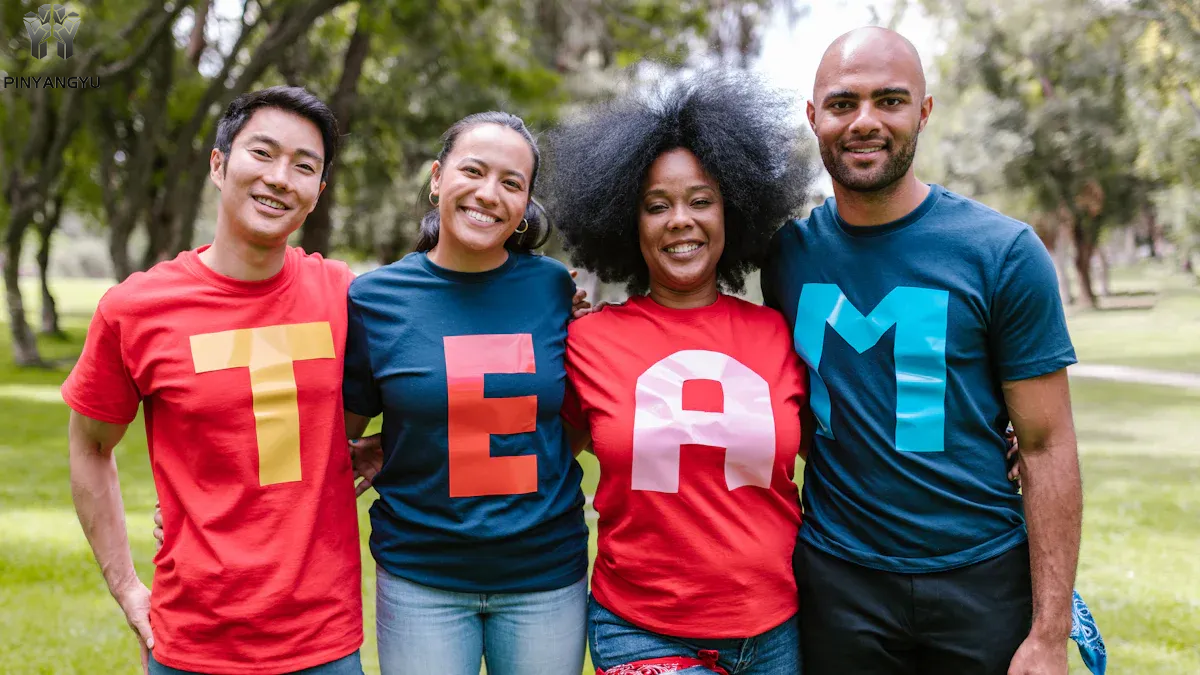

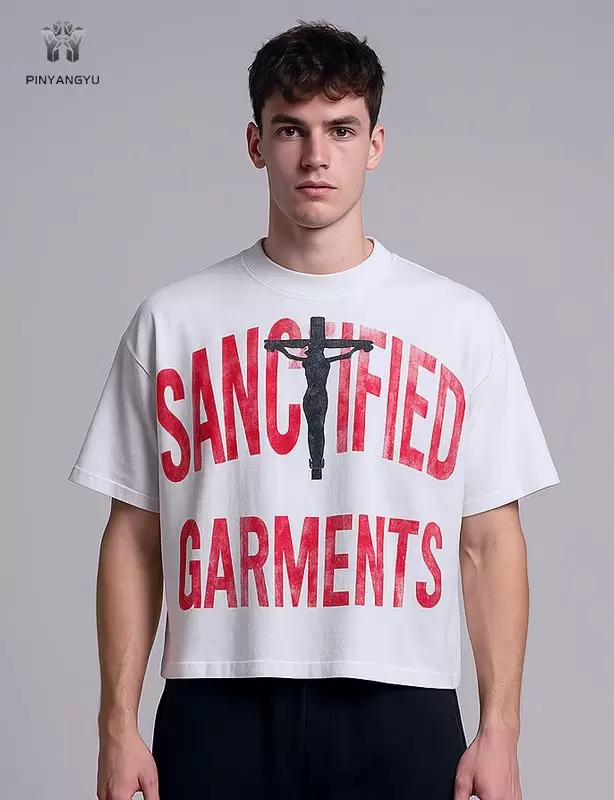
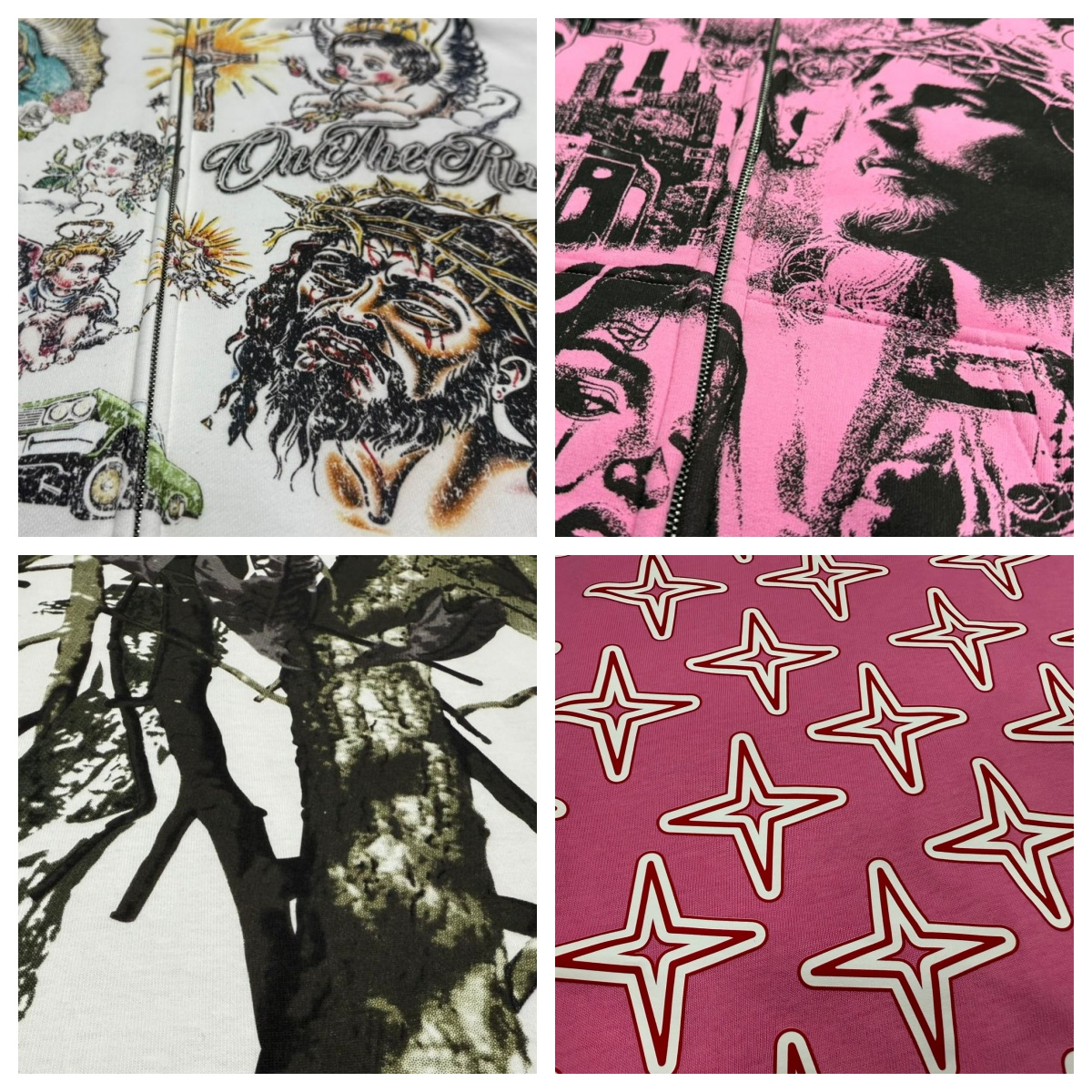
 Leave a Message
Leave a Message